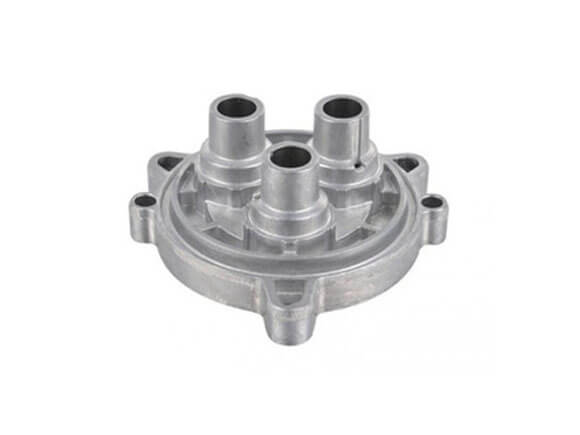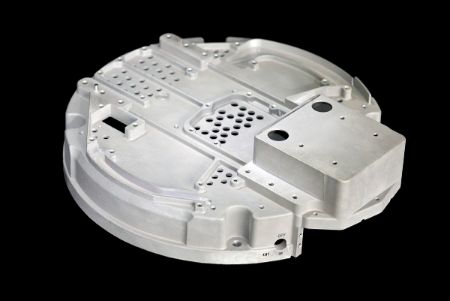Essential Reasons Why Aluminum Casting Company is Enhancing Modern Manufacturing
Wiki Article
Aluminum Casting Explained: Secret Facts and Insights for Industry Professionals
Aluminum casting offers as an essential procedure in modern-day production, forming components across numerous sectors. Its diverse methods, such as sand and die casting, accommodate different production requirements. The distinct properties of aluminum alloys improve their applicability, yet tests stay in keeping quality and performance. Recognizing these facets is vital for sector specialists. What are the most recent improvements and finest methods that can additionally maximize this procedure?Overview of Aluminum Casting Processes

Secret components of aluminum casting processes include the prep work of mold and mildews, which might be made from sand, steel, or ceramic materials, depending upon the meant use. In addition, temperature level control is important to ensure correct melting and solidification of aluminum.
The casting procedure permits for elaborate designs and can attain high levels of dimensional accuracy. As soon as cooled, the castings might go through ending up procedures such as machining or surface therapy to satisfy particular efficiency standards. Overall, aluminum casting works as a functional production technique, effectively fulfilling the diverse demands of different industries.
Kinds Of Aluminum Casting Techniques
In the domain of aluminum casting, numerous methods are used to achieve various results. Sand casting methods offer adaptability and cost-effectiveness for complex forms, while die casting procedures use high accuracy and effectiveness for mass manufacturing. Comprehending these approaches is vital for selecting the proper approach based upon project demands.Sand Casting Strategies
Sand casting techniques stand for a basic method in aluminum casting, where sand is utilized as a mold and mildew material to shape liquified metal. This procedure entails creating a pattern from the desired component, which is after that placed in a sand blend to create a mold and mildew. The sand is compacted around the pattern, and after removal, it produces a dental caries in the shape of the part. Molten aluminum is poured right into this cavity, allowing it to solidify and cool down. One substantial benefit of sand casting is its flexibility; it can suit large parts and intricate shapes. In addition, the products utilized are reasonably low-cost, making it an accessible alternative for numerous production applications in the aluminum sector.Die Casting Processes
Die casting processes are a popular approach for forming aluminum parts, using high-pressure methods to compel liquified steel into precisely engineered molds. This process is especially favored for its capability to create intricate shapes with limited resistances and a smooth coating. There are 2 key kinds of die casting: warm chamber and chilly chamber. Warm chamber die casting is suitable for metals with low melting points, allowing for faster production prices. Alternatively, cool chamber die casting is optimal for higher melting point steels, calling for a separate melting furnace. Both methods enhance efficiency and lower product waste, making them vital in automobile, aerospace, and durable goods markets. Comprehending these processes aids experts select one of the most proper method for their specific applications.Product Feature of Aluminum Alloys

Strength and Sturdiness
Toughness and durability are important features of aluminum alloys that make them suitable for various casting applications. These materials display a favorable strength-to-weight proportion, permitting for the production of light-weight yet robust parts. When it come to tensile strength, specific aluminum alloys can be engineered to withstand considerable tons without deforming. This residential property is particularly vital in sectors such as aerospace and vehicle, where performance and safety and security are vital. Furthermore, aluminum alloys frequently retain their mechanical homes under diverse temperature conditions, making sure regular efficiency. The innate ductility of these alloys likewise permits reliable shaping throughout the casting procedure, making it easier to generate intricate geometries. On the whole, the toughness and resource longevity of aluminum alloys add substantially to their extensive use in sophisticated applications.Corrosion Resistance Characteristics
While aluminum alloys are prized for their toughness and light-weight homes, their deterioration resistance is an additional crucial attribute that boosts their suitability for various applications. Aluminum normally develops a safety oxide layer when subjected to moisture, which aids to avoid more oxidation. This fundamental residential property makes aluminum alloys especially valuable in settings susceptible to deterioration, such as aquatic and industrial setups. Furthermore, different alloy structures can influence resistance degrees, with certain alloys especially engineered to enhance this particular. Treatments like plating can further boost corrosion resistance by enlarging the oxide layer. Comprehending the corrosion resistance of aluminum alloys is necessary for industry experts when picking products for projects needing durability and durability in tough environments.Benefits of Aluminum Casting in Production
Aluminum casting deals various benefits in production, making it a recommended choice for numerous industries. One considerable benefit is its light-weight nature, which adds to lowered transportation expenses and improved power performance in end items. In addition, aluminum's outstanding thermal and electrical conductivity boosts performance in applications needing warmth dissipation or electrical transmission.The product's capability to be cast right into elaborate shapes permits style adaptability, reducing the need for additional machining processes. In addition, aluminum casting shows superior corrosion resistance, leading to longer item life expectancies and lower upkeep expenses.

Common Applications of Aluminum Castings
The flexibility of aluminum casting allows its widespread use throughout various markets. Common applications include vehicle components, where lightweight and corrosion-resistant elements, such as engine blocks and transmission real estates, enhance car efficiency. In the aerospace field, aluminum castings are made use of for architectural components, using toughness without including significant weight.
Furthermore, the electric sector take advantage of aluminum spreadings in making enclosures and heat sinks, where thermal conductivity is vital. The durable goods sector also integrates aluminum castings in products like cooking equipment, furnishings, and attractive products, incorporating appearances with performance.
Furthermore, the building market utilizes aluminum castings for architectural aspects, window structures, and fixtures, which provide longevity and design versatility. In general, the diverse applications of aluminum castings underscore their importance in modern production, adding to improvements in effectiveness and product design throughout several areas.
Developments and Technological Developments
As industries proceed to evolve, innovations in aluminum casting innovation are transforming manufacturing processes and item capacities. Innovations in 3D printing and additive manufacturing have enabled the production of complicated geometries that were previously difficult to attain with conventional approaches. These modern technologies permit for fast prototyping, lowering lead times and costs.In addition, enhancements in mold and mildew style and materials have actually enhanced the casting procedure by enhancing effectiveness and decreasing waste. The assimilation of wise production methods, such as IoT tools and real-time data analytics, permits better surveillance and optimization of production parameters, causing better outputs.
In addition, developments in aluminum alloys give enhanced stamina, corrosion resistance, and lightweight properties, providing to the growing needs in automotive and aerospace sectors. Collectively, these advancements are not just boosting efficiency yet additionally meeting the extensive requirements of modern-day design applications.
Ideal Practices for Quality Control in Aluminum Casting
Making sure high-grade outputs in aluminum casting requires adherence to best techniques that encompass different stages of the manufacturing process. Initially, complete material inspection is important to confirm the high quality of see page aluminum alloys used, as contaminations can greatly impact the end product. Carrying out exact melting and pouring techniques reduces problems; maintaining ideal temperature levels stops oxidation and promotes harmony.In addition, mold design site link plays a crucial function; making use of computer-aided design (CAD) can enhance precision and decrease human error. Routine monitoring of the cooling procedure is vital to prevent bending and shrinkage. Furthermore, utilizing non-destructive screening methods, such as ultrasonic or X-ray examinations, assists recognize internal flaws without damaging the parts.
Lastly, developing a feedback loophole with designers and operators fosters continual enhancement, ensuring that quality assurance measures progress alongside technical developments. By following these finest techniques, manufacturers can improve the integrity and performance of aluminum castings.
Often Asked Inquiries
What Are the Environmental Influences of Aluminum Casting?
The environmental effects of aluminum casting consist of significant energy consumption, greenhouse gas discharges, and possible water pollution from factory procedures. Additionally, bauxite mining for aluminum ore can result in habitat damage and dirt destruction.How Does Aluminum Casting Compare to Other Metal Casting Processes?
Aluminum casting commonly uses benefits in light-weight parts and corrosion resistance compared to other processes, such as iron or steel casting, which may offer higher stamina however cause heavier and much less corrosion-resistant items. - Aluminum FoundryWhat Prevail Defects in Aluminum Castings and Their Causes?
Common flaws in aluminum castings consist of porosity, shrinking, and additions. Causes frequently originate from incorrect putting techniques, inadequate mold and mildew style, or contamination of the liquified steel, affecting the end product's stability and performance.What Safety Precautions Should Be Taken Throughout Aluminum Casting?
During aluminum casting, important safety precautions include using protective gear, ensuring correct air flow, preserving a clean work area, managing molten metal with care, and following well-known procedures to minimize threats of burns, inhalation threats, and mishaps.Just How Can I Boost the Performance of My Aluminum Casting Operations?
To boost efficiency in aluminum casting procedures, one should maximize mold style, streamline material handling, use automated processes, perform routine upkeep on devices, and buy staff member training to enhance abilities and efficiency.Numerous methods exist, aluminum casting incorporates a number of key processes that provide to different applications and requirements. Secret components of aluminum casting processes include the prep work of mold and mildews, which might be made from sand, metal, or ceramic materials, depending on the meant usage. Sand casting techniques stand for a fundamental technique in aluminum casting, where sand is used as a mold product to shape molten metal. As sectors continue to progress, innovations in aluminum casting innovation are changing production procedures and item capabilities. Guaranteeing top quality outcomes in aluminum casting calls for adherence to best methods that incorporate various stages of the manufacturing procedure.
Report this wiki page